Malaysia is famous for (among other things) its food. But, there is no denying the fact that the variety of delicacies available here can sometimes come across as unappetizing for those who are not used to the local cuisine. Newly arrived expats, especially, tend to stay away (only in the beginning, of course) from anything that looks or smells “funny.”
But, where is the fun in shying away from food you are not used to? Try them all! You never know what you may or may not like. For Malaysians, the items below are part of their everyday staple (well, sometimes).
If you still haven’t tried the delicacies mentioned below, we suggest you do so now.
Also, do let us know in the comment section below if we have missed out on any delicacies.
1. Durian
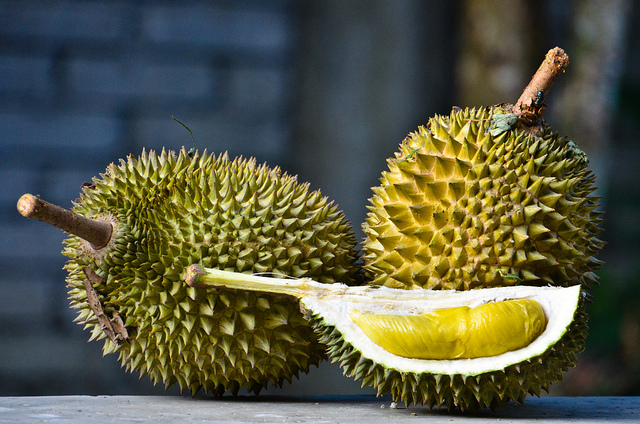
Photo credit: Mohafiz M.H. Photography (www.lensa13.com) / Foter / CC BY-NC-ND
The first thing that will catch your attention is the sight of its green, spiky exterior. A cleaver or big knife is usually used to crack open the fruit’s tough and spiky exterior, releasing its extremely…strong odour. Look beyond the smell and you will see the soft, fleshy and creamy fruit.
See also: Types Of Fruits Available in Malaysia
2. Pig’s Brain Soup
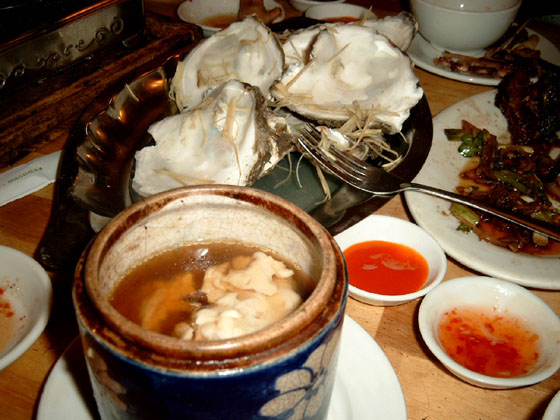
Photo credit: PHeede / Foter / CC BY-SA
The pig’s brain is boiled together with pork meat and bones to produce a bowl of hearty soup. Definitely a treat for the weary and hungry! What’s more, the soup is even said to possess some healing properties. The high percentage of good fats it contains speeds up the body’s process of recovery and healing after an injury.
3. Bak Kut Teh
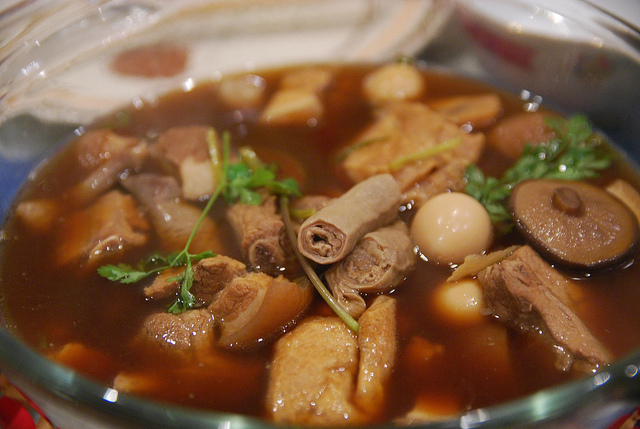
Photo credit: avlxyz / Foter / CC BY-NC-SA
To make the soup, fatty pork ribs are simmered in a broth of herbs and spices for a very long period. The end product is a nutritious soup with a soothing, herbal sweetness, enriched with the flavours from the spices and pork ribs. For the local Chinese, the perfect Bak KutTeh dish does not stop there. Pork intestines and offal are also thrown into the soup to spice it up. The soup is usually served in a claypot with a bowl of white rice.
4. Belacan
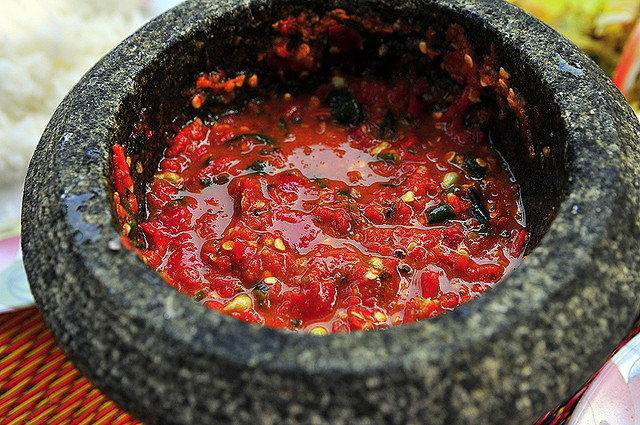
Photo credit: irwandy / Foter / CC BY
Belacan is not exactly a dish or cuisine but rather an essential ingredient that is used in a variety of local dishes such as the famous Assam Pedas Melaka, sambal belacan, masak lemak and laksa Nyonya. Belacan is also added into curries and dipping sauces because it enhances the flavour of the sauce. Essentially, belacan is simply dried shrimp paste. It is not just made from any shrimp, but only a particular tiny shrimp species known as “geragao.” In its raw form, belacan appears in the form of round patties that have already been dried under the sun. For those not used to it, the belacan is simply another “smelly” Malaysian condiment.
5. Petai
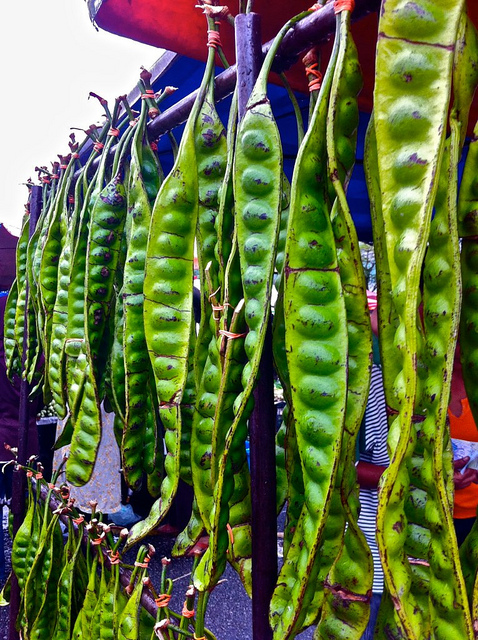
Photo credit: Nessalow91 / Foter / CC BY-SA
Petai or “stinky beans” is another Malaysian food that you might find weird. Petai tastes great, especially when cooked in sambal, a dry, spicy sauce with pounded chilly as its core ingredient. While eating this vegetable may seem very normal at first, its unpleasant after-effects are sure to show soon enough. After eating petai, you will notice your urine having a rather strong, ammonia-like smell which is characteristic of the beans. Your breath will also carry a slight whiff of the beans. Also, the beans are believed to have blood-cleansing properties and healing properties for ailments of the kidney.
6. Chicken Feet
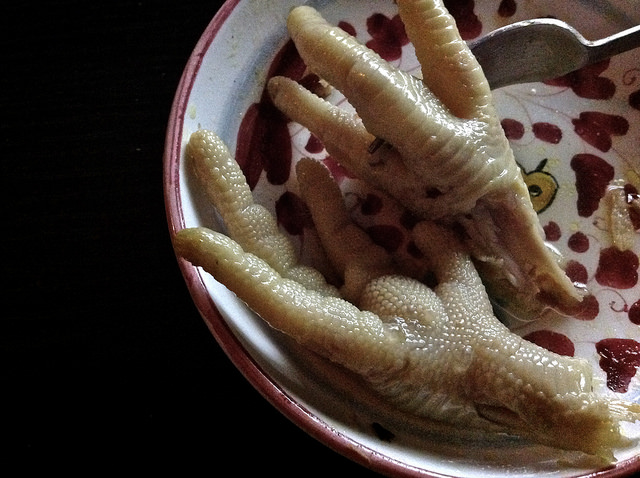
Photo credit: Julia Manzerova / Foter / CC BY-NC-SA
Eating chicken feet may seem weird to some people but it is actually pretty common among Malaysians. Chicken feet can be prepared in a variety of ways; braised, fried and boiled in soup. The feet of a chicken mostly consist of skin and tendons and has very little meat. So, it mainly provides a soft and fatty texture.
See also: Five Local Malaysian Foods You Must Try
7. Umai
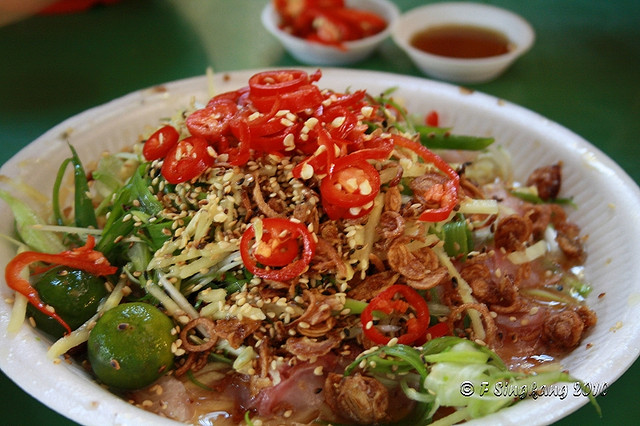
Photo credit: feli* / Foter / CC BY
Umai is an authentic Sarawakian cuisine. In English, the dish is called “Sarawak raw fish salad”. It basically consists of thinly sliced raw fish, mixed with onions, chilly, salt and the juice of sour fruits like lime or assam. The dish is usually eaten with a bowl of roasted sago pearls, which are actually sago starch that has been mixed with coconut milk, rolled into balls and roasted.
8. Sago Worms
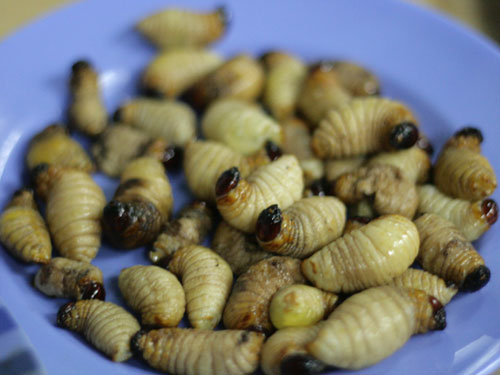
Photo credit: babe_kl / Foter / CC BY-NC
Creepy crawlies such as worms always have a way of making us shudder with disgust. However, this does not hold true to some people who regard these creatures as appealing delicacies. Some Malaysians actually enjoy eating Sago worms as snacks! These worms are typically found on fallen sago palms. They have a fat and sluggish appearance with dark brown heads. They can be eaten raw or lightly fried.
9. Tempoyak
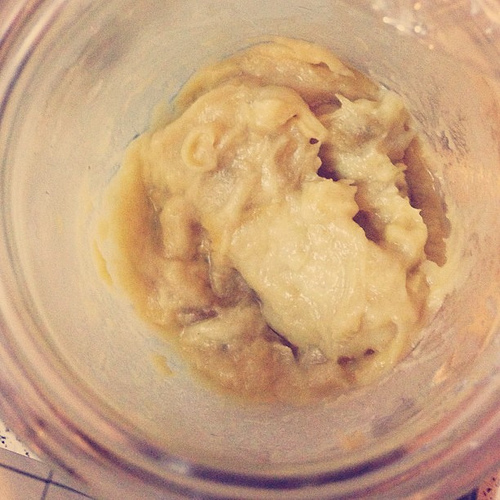
Photo credit: feli* / Foter / CC BY
The flesh of a durian already smells rotten when it is ripe. Nevertheless, this does not deter Malaysians from enjoying this local fruit. But what about the smell of a durian flesh that is already rotten? Would people still want to eat it? Yes, of course! Malaysians have actually develop a condiment out of overripe or leftover durian flesh; tempoyak. Just mix the overripe durian flesh with some salt and leave it out under room temperature for over 24 hours. Once fermented, the mixture turns sour and takes the form of a thick, white or yellow cream, that looks like lumpy mayonnaise. Just store it in the fridge and take it out whenever you want to use it.
10. Keropok Lekor
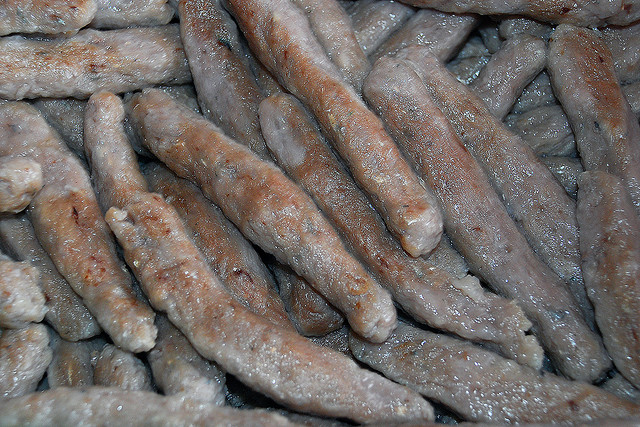
Photo credit: chooyutshing / Foter / CC BY-NC-SA
Pork sausage, beef sausage, turkey sausage and even sausages made from venison meat are so …normal. Fish sausage, on the other hand, is something you don’t find everywhere. In Malaysia, keropok lekor is a local snack that is best described as fish sausage in English. The sausage is mainly made of fish paste, sago flour and salt. At first glance, it may look very unappealing as it is thick and long with a very unattractive brownish-grey colour. Its fishy smell may also be a turn-off to your appetite. However, it is pretty tasty when dipped in a special sweet chili sauce.
Read more:
"ExpatGo welcomes and encourages comments, input, and divergent opinions. However, we kindly request that you use suitable language in your comments, and refrain from any sort of personal attack, hate speech, or disparaging rhetoric. Comments not in line with this are subject to removal from the site. "




















